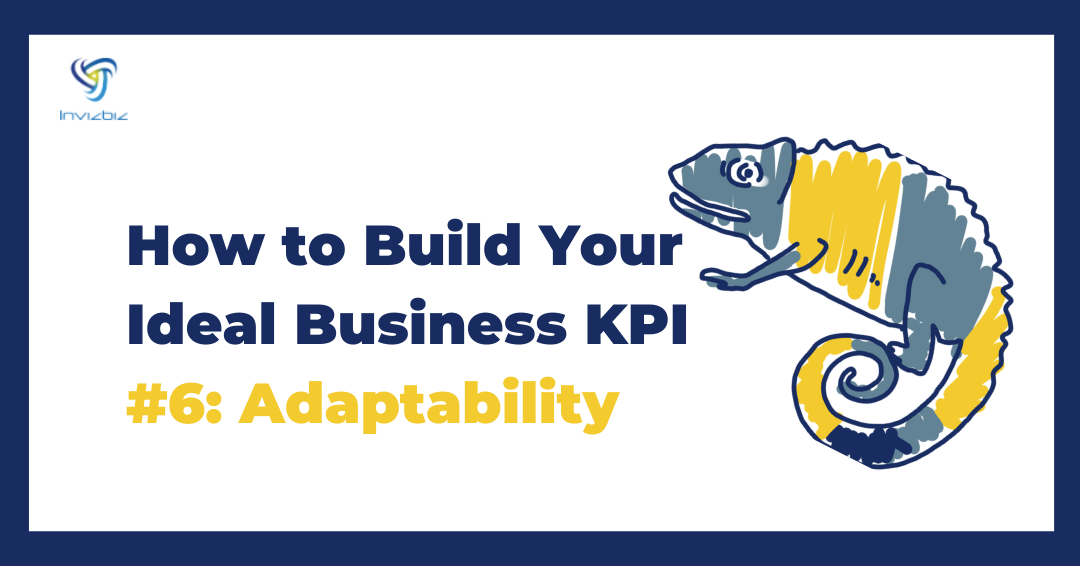Adaptability is your business’ ability to adjust to new conditions. Having been in business since 1994, one thing has been constant, and it’s this: change.
That is why being able to effectively adapt to change has been a critical part of growing and scaling a business sustainably.
To help you and your business to implement this, in this article, we’re going to tackle the following:
- The Two Sources For New Conditions
- Ways to Achieve Adaptability In Your Business
- How to Assess Your Business’ Adaptability
What are the Two Sources of New Conditions?
When we look at the source for new conditions, there are only two distinct areas: those that you can control, and those that you can’t control. Let’s tackle each in detail below.
Those That You Have Influence Over
The changes you can influence are those that are within your business. These are your systems, processes, and the way you operate.
Unfortunately, it’s the internal changes that often get missed, as these are within your control and you can decide whether or not to carry them out.
For example, after decades of guiding entrepreneurs to build their ideal businesses, here’s what I often see. They work hard to get through the start-up and growth phase and reach a level of profitability. But once they hit this level, they get stuck, and they hit a growth ceiling.
And here’s the reason behind this.
Once they achieve their desired level of success or get close to it, they become reluctant to change the business model too much. After all, why fix something that isn’t broken?
But it’s important to understand that as you move through various levels in your business, what is needed for the next phase is different. What took you to your $1 million mark will not take you to your multi-million mark.
That is why it’s required that changes take place in the business, whether the change is within the culture of your team, the people you engage with, or the way you operate the business.
External Forces That You Have No Control Over
The second source of change is something that we entrepreneurs have experienced many times, and it’s this: External forces.
Upon writing this, the world is amid the COVID-19 pandemic. This had a devastating impact on so many lives and businesses globally. Corporate leaders and their team members struggle to adapt to having to work at home. And those that failed to adapt, had to close their businesses.
Soon enough, there will be another “COVID-19” in the world of business. They could take the form of a stock market crash, a global financial crisis, a weather event, war, or a terrorist attack. We don’t have control over them, and we can’t always predict when they’ll come. That’s why you must structure your business to not only survive but thrive during these conditions.
To do that, we’ve outlined some of the ways you can achieve high adaptability in your business below.
How to Achieve High Adaptability In Your Business
Some changes can occur outside your control. These are things like market changes, regulation changes, and competition. They exist and can occur at any time. That is why it’s crucial to set up your business to best handle these inevitable situations. Outlined below are the elements you’ll need to achieve high adaptability in the business.
Time
When handling these situations, one of the main struggles of businesses is running out of time. So while there may be a solution and an approach, if there’s a lack of time, the business may not survive long enough to implement the solution.
The key here is to create enough time and space to cater to these unexpected events. To achieve this, you need to implement the following:
Gain awareness of an issue
As for most issues, the earlier you know that something is going astray, the better you are at handling it. It’s important to set up warning systems to warn you when something’s shaking up the business. This can take the form of statistics, dashboards, and a weekly review of your business. These tools should provide you with an early warning and enough time to adapt.
Establish cash reserves to adapt
Another key issue for businesses is when things don’t go as planned, there’s often a lack of resources to adapt and evolve. Usually, at a time of need, resources are not accessible as no one wants to transfer your risk to themselves. That is why it’s critical to implement at least a 12-month worth of cash reserves to afford needed resources and have enough time to get organized and adapt.
Low-Physicality
One thing I’ve learned over the decades is that less physicality equates to more adaptability.
The less that exists in the real world that you can touch and feel, the more adaptable you will be. This includes offices, paper, equipment, vehicles, and stock. For example, those with a physical office with physical papers and equipment might be more impacted by a weather event compared to those with low physicality.
I understand that all businesses require a level of physicality – some more than others. However, you can choose how you structure these to be able to adapt more effectively. Some of the key tools to consider are the following:
Completely Paperless and Cloud-Based Business
A key policy for all my businesses is to be totally paperless and fully cloud-based. Not only does it save time from physically printing, filing, and organizing documents, it offers stronger security and better access.
In a situation where team members can’t physically be in the office like during the lockdown, they can still access these critical files from anywhere in the world as long as they have internet.
Meanwhile, sensitive files can also be encrypted and protected by multiple layers of security. It’s safer and more accessible than storing them in an office.
It also lowers the risk of these important documents getting burned, ripped, or destroyed during weather events and fires.
No Physical Office or Equipment
For some businesses, having no physical office or equipment may not be possible. I would recommend investigating this fully rather than adopting a view that, “this is how it’s done in our business line.”
When you’re open to possibilities, you’re able to imagine what it could look like rather than what it looks like right now.
If you do need a physical office, think about how it can be structured during unexpected events. For example, I had a client (and a good friend) of mine that occupied a large office for over a decade. There were many desks, phones, computers, and papers, as well as the storage and handling of all this stuff. It was just the way it was always done.
Although he still preferred to have an office, he changed its format and purpose completely. As a result of this he was able to reduce costs significantly, locate himself in a more strategic location, and as he moved his business to a paperless model was able to make it a more nimble and adaptive organization.
Culture
Being able to adapt requires change. One of the key blockers which I have seen in many businesses is the culture itself.
Once a business has been established for more than 10 years, this issue becomes more of a concern. Success can lead to complacency, which can lead to the false belief that the business cannot fail. The mindset is that we just need to keep doing what we have always done – as it has worked so far.
I remember having a conversation with a good friend of mine who has built a very successful business in the Real Estate sector. He wanted to shake it up a bit and try to evolve the business to adapt to the changes that were taking place in his industry.
But being such a big ship and with the existing team, there was significant resistance to evolution and adaptation. It is just too hard to do without rebuilding the team.
As a result of this, he was unable to move quickly and make the changes he knew were needed fast enough, which was often a source of frustration.
Because of this, it is crucial to establish a culture that embraces change. Without this being in place, it will be very difficult to bring the team and organization along with you when required. In most cases, it will simply not happen and your team will be the biggest obstacle to overcome in this process.
Procedures and Processes
This may initially sound counterintuitive to the concept of adaptability. However, with the right structure and procedures in place, you can move faster and with less chaos.
This can apply to many aspects of a business. For example, you’re rolling out a new service. If you already have a clear process and procedure for doing this – you can then adapt quickly following a tried and tested methodology.
This can also apply to finding and engaging new team members, rolling out a new marketing campaign, or any other aspect of your business.
How Ideal Is Your Business’ Adaptability?
Adaptability is your business’ ability to adjust to new conditions. Today, the world’s going through an unexpected time, the pandemic, and it has impacted many lives and businesses globally.
Soon enough, there will be another unexpected event that’ll test the adaptability of your business. It can come in the form of a stock market crash, a financial crisis, or a weather event. The question is, is your business adaptable enough to survive and thrive in these situations?
To further assess your business’ adaptability, answer the following with a “yes” or “no”.
- Do you fail to track data in your business?
- Do you lack statistical systems in place that warn you before irreversible damage occurs?
- Do you lack cash reserves in case of emergencies?
- Do you have a “high level of physicality” in your business? For example, having a physical office, equipment, paper, vehicles, and stocks.
- Is it hard for you and your team to accept change as “normal”?
- Do you lack clear procedures and systems?
Once you’ve reflected upon these questions, rate how ideal your adaptability is from 1-10. Take note that the more you’ve answered “yes” to the questions, the lower the score out of 10 should be.
Then, ask yourself, what changes can you implement to increase the rating and improve your adaptability position? How can you turn it into a model that can easily change and adapt to the current marketplace?
If you want to follow along with the story of how I redesigned my previous business into an ideal one, sign up for our newsletter: https://idealbusiness.invizbiz.com/newsletter

